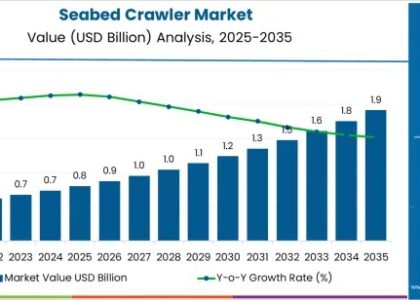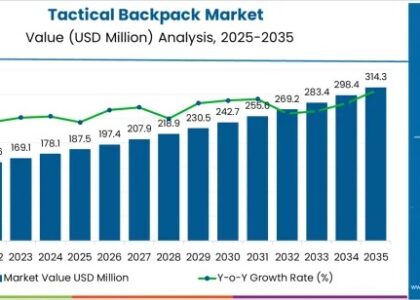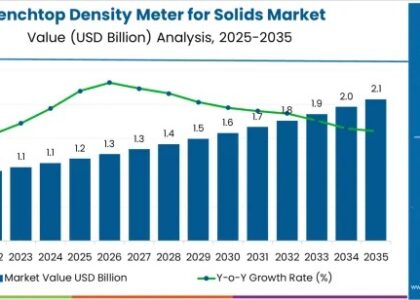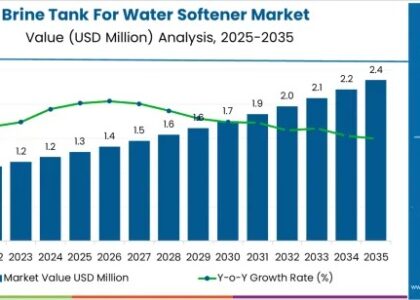The global soy-based food market is set to witness growth at a CAGR of 5.8% over the forecast period (2022-2032) and top a valuation of USD 27.1 Bn by 2032.
Nutritious value and versatility of ingestible forms act as growth levers for the global soy-based food market. As consumers move towards health-conscious diets, soy food products present an ideal alternative for dairy, meat, and poultry-intensive diets.
The prevalence of heart diseases is creating a lateral shift in consumer preference for cooking oil. Heart diseases are a leading cause of mortality in the US, causing about 650, 000 deaths every year. Health-conscious consumers are looking for low bad-cholesterol heart-friendly alternatives to conventional cooking oil. This has changed the soy-based food market outlook very positively.
Get Sample PDF Brochure: https://www.futuremarketinsights.com/reports/sample/rep-gb-15122
Although presence of alternatives such as olive oil is hindering the soy-based food market growth, the manufacturers are expanding their production capacities to distribute their products at competitive pricing.
According to the World Soy Oil Processors Association (SOPA), the global soy oil production in 2019-2020 was more than 56 million metric tons. Soy-oil is a healthier alternative; and the soy-based food market analysis indicates that the successful marketing campaigns are viewing millennials and geriatrics as their target consumer base.
While consumers have been increasingly shifting towards health-centric products, the COVID-19 pandemic has provided further impetus to the soy-based food market trend. Amid nationwide lockdowns in several countries, many leading meat plants have been shut down in order to avoid further contagion of coronavirus. This potential of scarcity of meat supply is influencing consumers to turn to plant-based meat products, with meat alternatives such as tofu witnessing phenomenal sales in developed regions. Such trends have worked in favour of soy food products market and changed the global outlook drastically.
Key Takeaways from Market Study
- East Asia is expected to dominate the soy-based food market by accounting for the maximum market value share of about 25% by 2022 end.
- Rising demand for meat substitutes is expected to result in a subsequent increase in the demand for soy-based food in different regions across the globe which is predicted to rise considerably during the assessment period (2022-2032)
- By product type, tofu is expected to account for a considerable market value share of the global market by 2022 end
- Presence of soy-based food products as ingredients in non-vegetarian dishes makes them easy to digest and enhances their flavor which is predicted to influence the demand for soy-based meat products in the near future
- Indirect channel is expected to account for a highest soy-based food market share by 2032 end.
“Vegetarians who can’t consume meat products are looking for an alternative that provides the same amount of nutritional value owing to which the demand for soy-based food is expected to show an impressive increase in the coming decade”, says a Future Market Insights analyst.
Request for Report Customization: https://www.futuremarketinsights.com/customization-available/rep-gb-15122
More Insights into the Soy-Based Food Market Report
In its latest report, FMI offers an unbiased analysis of the global soy-based food market, providing historical data from 2017 to 2021 and forecast statistics for the period 2022-to 2032. To understand the global market potential, growth, and scope, the market is segmented based on type (meat substitutes (textured vegetable protein, tofu, tempeh), non-dairy yogurt, non-dairy spread, non-dairy ice cream, non-dairy cheese), application (meat products, dairy products, bakery and confectionery, functional food, instant food), distribution channel (direct, indirect (hypermarkets/ supermarkets, convenience store, independent retailers, online retailers)) and region.
As per FMI reports, North America will retain its lead in the demand for soy-based food products. Rising consumer demand for soy oil and soy-based products boost the sales of soy-based food in the market of the region.
China and East Asia present massive growth potential for soy-based food market. China accounts for around 37% of total soy-based food market share. Japan and Korea, too, dominate the Asia Pacific soy-based food market.
In terms of product type, meat substitutes seem to monopolize the market. High nutritional value, flavor and texture, and easy digestion of soy items push the demand for soy-based meat products.
Indirect sales channels like supermarkets and convenience stores will lead the market. Soy-based meat products, soy-based baked goodies, soy-based exercise supplements are easy to access via indirect distribution channels. With the rise in demand for these products, the indirect sales channels also gain traction in the market.
Recent Developments:
Atlante introduced its vegan yogurt in the Netherlands in June 2021. The item is currently available in Superunie stores under the Own Label Melkan brand.
Explore More Valuable Insights
Future Market Insights, in its new report, offers an impartial analysis of the global soy-based food market, presenting historical data (2017-2021) and estimation statistics for the forecast period of 2022-2032.
The study offers compelling insights based on product type (meat substitutes, non-dairy ice cream, non-dairy cheese, non-dairy yogurt, non-dairy spread), application (meat products, dairy products, bakery and confectionery, functional food, instant food), and distribution channel (direct and indirect) across seven (North America, Latin America, Europe, East Asia, South Asia, Oceania and Middle East & Africa) major regions of the world.
Get Report now: https://www.futuremarketinsights.com/checkout/15122
Global Soy-based Food by Category
By Product Type, Global Soy-based Food is segmented as:
- Meat Substitutes
- Textured Vegetable Protein
- Tofu
- Tempeh
- Non- dairy Yogurt
- Non-dairy Spread
- Non- dairy Ice Cream
- Non- dairy Cheese
By Application, Global Soy-based Food is segmented as:
- Meat Products
- Dairy Products
- Bakery and Confectionery
- Functional Food
- Instant Food
By Distribution Channel, Global Soy-based Food is segmented as:
- Direct
- Indirect
- Hypermarkets/Supermarkets
- Convenience Store
- Specialty Stores
- Independent Retailers
- Online Retailers
By Region, Global Soy-based Food is segmented as:
- North America
- Latin America
- Europe
- East Asia
- South Asia
- Oceania
- Middle East & Africa
About Future Market Insights (FMI)
Future Market Insights, Inc. (ESOMAR certified, recipient of the Stevie Award, and a member of the Greater New York Chamber of Commerce) offers profound insights into the driving factors that are boosting demand in the market. FMI stands as the leading global provider of market intelligence, advisory services, consulting, and events for the Packaging, Food and Beverage, Consumer Technology, Healthcare, Industrial, and Chemicals markets. With a vast team of over 400 analysts worldwide, FMI provides global, regional, and local expertise on diverse domains and industry trends across more than 110 countries.
Contact FMI:
Nandini Singh Sawlani
Future Market Insights Inc.
Christiana Corporate, 200 Continental Drive,
Suite 401, Newark, Delaware – 19713, USA
T: +1-845-579-5705
For Sales Enquiries: sales@futuremarketinsights.com
Website: https://www.futuremarketinsights.com
LinkedIn| Twitter| Blogs | YouTube






